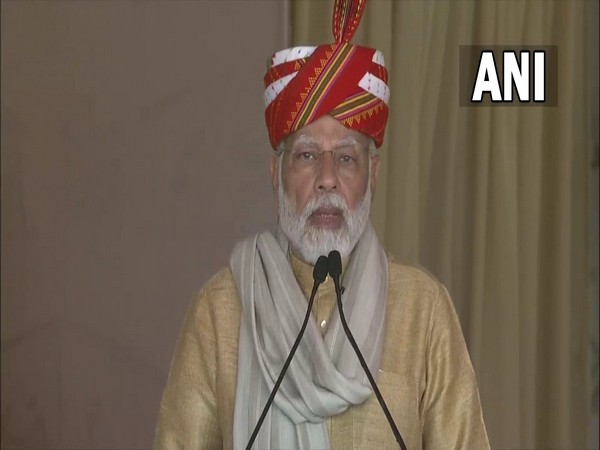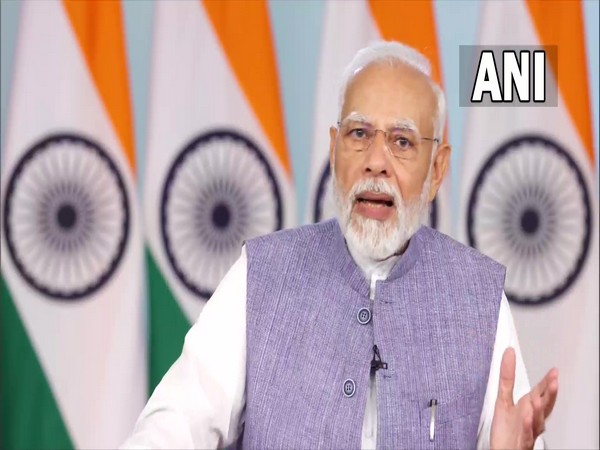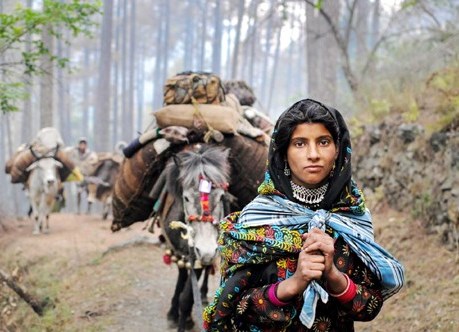Underlining the government’s efforts to promote tribal products, Prime Minister Narendra Modi on Thursday said that the Centre is working continuously to ensure that the demand for products made by Adivasis should increase.
“In the last eight to nine, events like Aadi Mahotsav that are connected to the tribal community have become a campaign for the country. I myself have become a part of several such programmes. The tribal community’s development and welfare is also a matter of personal relations and sentiments for me,” said PM Modi after inaugurating the mega National Tribal Festival at Major Dhyan Chand National Stadium here.
The Prime Minister said that in Gujarat too, he had spent his life’s formative years serving his Adivasi brothers and sisters in the entire tribal belt from Umargam to Ambika ji “Their lifestyle taught me about our culture, traditions, and heritage a lot,” PM Modi said.
“Tribal products should reach maximum market, their recognition should increase, their demand should increase, the government is continuously working in this direction as well,” PM Modi said
The prime minister also highlighted that now over 3000 ‘Van Dhan Vikas Kendras’ have been established in different states of the country.
“More than 3000 ‘Van Dhan Vikas Kendras’ have been established in different states of the country. Today the government is giving MSP on about 90 minor forest products,” he said.
“Today, more than 80 lakh self-help groups are working in different states, in which more than 1.25 crore members are our tribal brothers and sisters and a large number of them are our mothers and sisters,” he further added.
He said that over the last eight to nine years, events like ‘Aadi Mahotsav’ that are connected to the tribal community had become a campaign for the country.
PM Modi said that 21st-century India is walking on the mantra of ‘Sabka Saath, Sabka Vikas’ and the Aadi Mahotsav signifies this spirit.
“When diversities are woven into a thread of ‘Ek Bharat Shreshtha Bharat’, India’s grandness emerges before the world. This Aadi Mahotsav signifies this spirit,” said PM Modi.
He emphasised that the demand for the products made by the tribal society of India is increasing continuously and these are being exported to foreign countries.
“We get inspiration from our tribal society on how we can conserve it by taking resources from nature. The demand for the products made by the tribal society of India is increasing continuously and these are being exported to foreign countries,” he said.
He said that the government’s emphasis is on promoting tribal arts and enhancing the skills of tribal youth.
“Today the emphasis of the government is also on promoting tribal arts and enhancing the skills of tribal youth. New tribal research institutes are being opened in the country. These efforts are creating new opportunities for the tribal youth in their own area,” PM Modi said.
“PM Vishwakarma Kaushal Samman Yojana has been launched in this year’s budget which will provide financial assistance, skill training, and marketing support. It will also provide new employment opportunities for tribal,” he added.
Speaking about his government’s commitment to tribal development PM Modi said that the education of tribal children is of utmost importance.
“Tribal children may be in any corner of the country, their education and their future is my priority. Between 2004 and 2014 only 90 Eklavya Schools were opened whereas from 2014 to 2022 we have approved more than 500 Eklavya Schools,” he said.
“Out of these, studies have started in more than 400 schools and more than one lakh tribal students have started studying in these schools,” he added.
He added, “Language barrier is a big issue for Adivasi children. But the New Education Policy opens doors for mother tongue education. Adivasis can now learn in their own language and progress.”
PM Modi also took a round of the stalls featuring handicrafts and food products at the “Aadi Mahotsav” and stopped to interact with people manning the stalls.
He also paid floral tribute to tribal freedom fighter Birsa Munda, who belonged to the Munda tribe Born on November 15 in 1875 during British rule in the late 19th century, Birs Munda spearheaded an Indian tribal religious Millenarian movement across the tribal belt of modern-day Bihar and Jharkhand.
His birth anniversary is celebrated as Birsa Munda Jayanti in the country and coincides with the Jharkhand Foundation Day. (ANI)
Read More:http://13.232.95.176/


